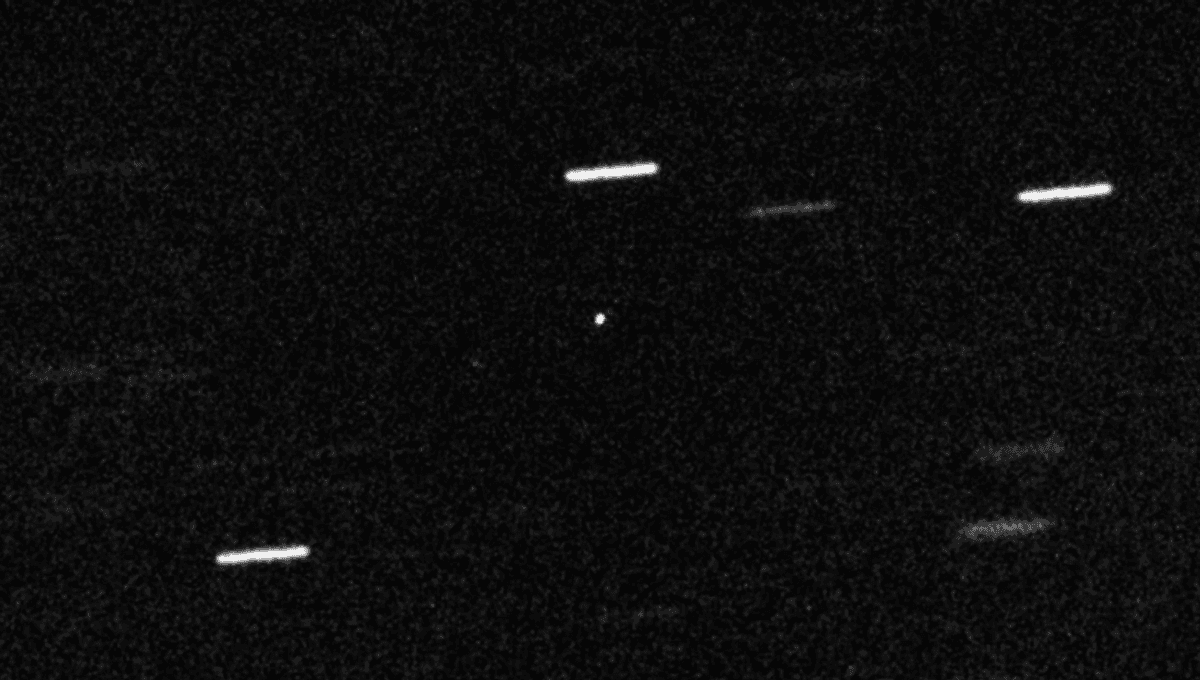
In 2017, astronomers at the Pan-STARRS1 observatory looking for near-Earth asteroids spotted an object as it hurtled past our Sun at 38.3 kilometers per second (23.8 miles per second).
Soon, telescopes around the world pointed in the unusual object’s direction, trying to capture as much data as they could before it moved away from the Sun. Looking at visible light reflecting off the object, scientists were able to determine its size and shape, finding it is around 400 meters (1,300 feet) long, and likely shaped like a pancake.
The speed and trajectory of the object A/2017 U1 suggested that it did not come from our Solar System, and that it will leave our Solar System again. ‘Oumuamua, as it is now called, was our first confirmed interstellar visitor. In 2019, we had our second confirmed interstellar visitor in 2I/Borisov, our first rogue comet.
So, is the Solar System absolutely teeming with interstellar objects, or are these rare occurrences that we happened to spot?
That’s a difficult question to answer, as (mentioned above) we have only ever seen two such objects moving at a relative velocity suggesting that they did not come from the Solar System. But papers have attempted to put limits on how many (or few) objects we should expect to find within certain orbits.
We have a few other clues that can help with this. Looking at the organization of our own Solar System. For instance, what we have learned about planet formation suggests that we should have sent a lot of our own comets on their own interstellar journey.
“Oort cloud formation models predict that for every comet that reaches the classical outer Oort cloud, a factor η = 3—100 more are expelled into interstellar space,” one paper on the topic explains. “If most stars have planets, and if planetary formation is usually accompanied by comet ejection, then there should be a substantial population of free-floating interstellar comets.”
Astronomers have also proposed that if there are a lot of interstellar objects out there, our Solar System may be able to capture them. Teams have found that interstellar objects whose orbit takes them within that of Jupiter would likely end up being obliterated by the gas giant within a few million years, with highly inclined orbits beyond that lasting longer.
There are objects in the Solar System – known as Centaurs – with high inclinations and unstable orbits.
“If a Centaur orbit is integrated forward or backward in time, it will invariably either hit the Sun, the planets, or be ejected from the Solar system,” one paper explains. Given enough time, Centaurs will be ejected from the Solar System, or collide with a planet (the most likely being the gas giants).
“The past lifetime is trickier to interpret literally because it would mean the Centaurs cannot have lived in the Solar system more than 1–100 Myr in the past. This indicates that they must all have been captured from the interstellar medium in the recent past.”
The team used a precise orbit determination method to look at the possible orbits of 17 high-inclination Centaurs, and a further two trans-Neptunian objects, going back billions of years into the past. Doing so, they found that their orbits were nearly polar 4.5 Gyr in the past, far from the common orbital plane expected if they had formed in the Solar System. Instead, the team suggests they were likely captured as the Solar System passed through the interstellar medium.
As for the precise number of how many interstellar objects are passing through the Solar System, that remains unclear. Recent studies have had more information to work with, given that we have found interstellar objects, with one estimating that “at any one time, there are ∼104 interstellar bodies of [ʻOumuamua]-size closer to the Sun than Neptune. Each takes ∼10 years to cross the planetary region before returning to interstellar space.”
We will learn more by looking for more interstellar objects, something which will hopefully become easier when the Vera C. Rubin Telescope begins searching the skies. If we find more, we may even be able to catch up with them.
Source Link: Our Solar System May Have Captured A Number Of Interstellar Objects